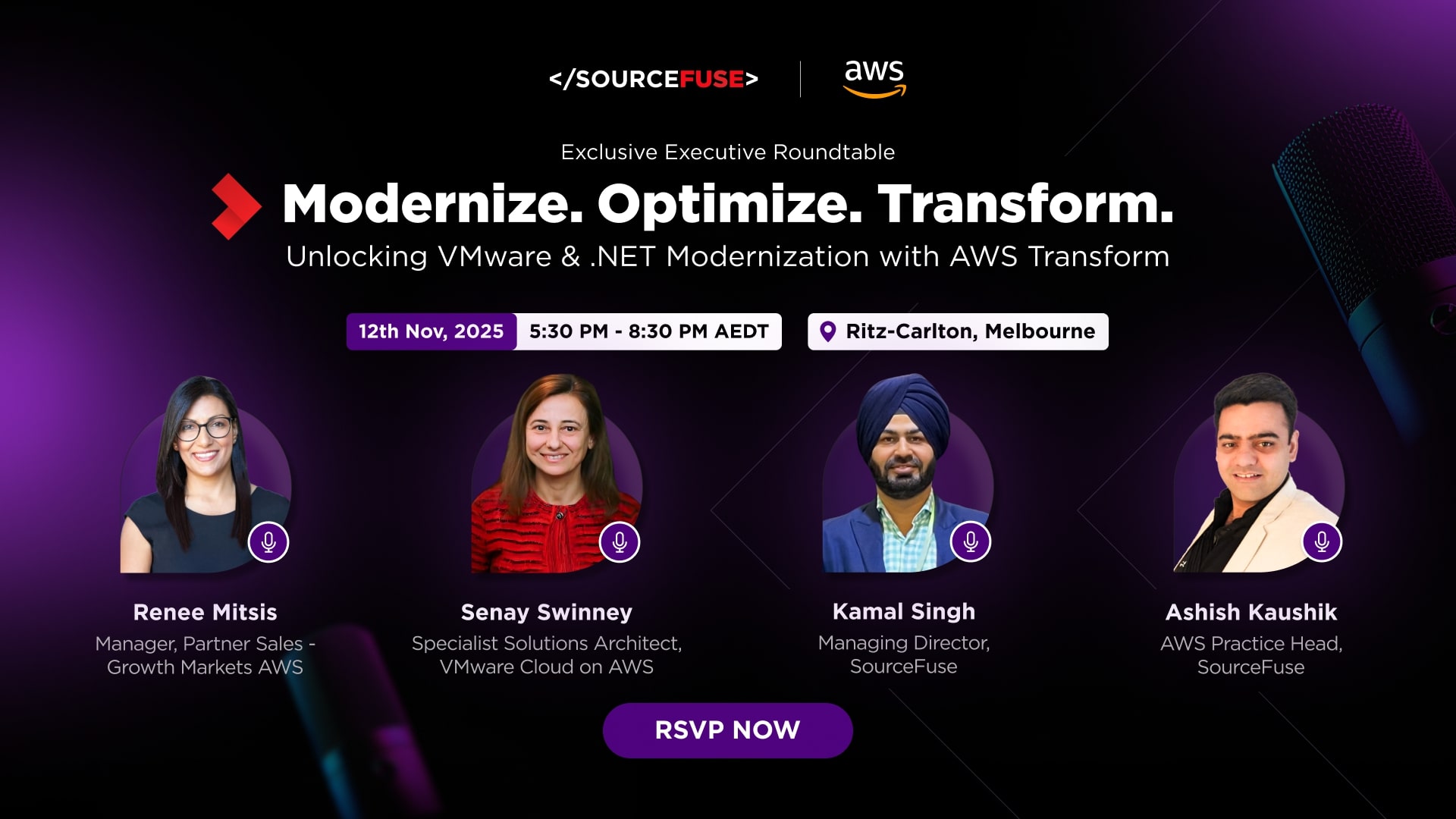#1 Which workloads are seeing the most modernization activities right now?
Over the last few years, I have seen a lot of customers interested in moving their legacy platforms which are highly dependent on licensing or closed-source modules – they are trying to move out vendor lock‑ins. The trend is to move away from high licensing costs and licensing complexities and move to an open-source, containerized platform.
And to some extent, part of their journey is to move them to the AWS serverless architecture, to make sure that the applications become more agile, more flexible, easier to operate, and add to the business value that the application provides.
#2 What would you say are the biggest challenges related to modernizing legacy apps?
I think if I have to talk about two of the biggest challenges, one is the time. Modernization is not something which can be done off the hook, it’s not a very easy thing to do. If you do not have a well-thought-out strategy or phased approach, your modernization can sometimes backfire and even create more complexity than it solves. Given that a lot of customers I see are under time pressure to move to the cloud, starting the modernization journey very early in their cloud adoption is going to get rid of this problem, at least.
The second one is the perception that moving to the cloud will bring overnight business improvements. Addressing this perception, at AWS we try to partner with the customer’s IT team, to drive this cultural shift within their organization, taking time to define what the business needs are of this application and then work towards it. There are no immediate resolutions just because you move to a cloud. You cannot expect to achieve 100 times better performance or 10 times better resiliency without putting in the hard work. So, the cultural shift of business users inside the organization is probably the second most important challenge or barrier that I have frequently seen with my customers.
Ready to start your cloud journey and modernize with AWS experts? Let’s talk.
#3 Once these challenges are successfully overcome, what are the long-term customer benefits?
Once these challenges are overcome, customers would probably experience three main benefits:
- Increased agility
When the customer invests time and resources not only in cloud migration but also modernize on the cloud, they will have better agility in their applications. - Improved scalability
One of the most important cloud benefits becomes more accentuated, which is elasticity. When the application becomes more elastic, it becomes more scalable. - Futureproofed
I would say the applications become futuristic – ready to meet business demands not just today, but in five years from now. For example, future load, performance, and manageability of the application.
There is a fourth benefit which, rather than being a separate one, comes as a result of these three and that relates to costs. Each of the above three may or may not be cost drivers; sometimes an app or platform can be at the same cost level as it was before being modernized. But, over the next few years modernization is probably going to give you fewer headaches regarding maintenance and scaling of that application, which ultimately brings a cost benefit. So, although I would never refer to cost savings as a modernization driver, at the end of the day, everything boils down to cost. And if not today, five years down the line cost savings will be positively affected by modernizing on AWS.
#4 Regardless of the challenges, why would a ‘modernized app’ be the way to go?
The first thing is that there is a huge drive to move to open source. Moving to open source exposes you to larger developer and user communities. Secondly, it drives down the cost in terms of platform and licenses. And thirdly, this open source movement is going to help you to integrate to a much bigger ecosystem in the future. These are the three main reasons that I would advise every customer to focus on before deciding whether an application is only to be lifted and shifted to the cloud or to be modernized.
Many applications can benefit by moving to a modernized version of it on AWS. If you just migrate and do not modernize an application, it’s like buying a Mercedes Benz then running it as a small, economy car. You’re not realizing the full benefit – the full extent in which it can serve your business. And that is what I think is good to avoid; by putting these three lenses on every workload, the move to AWS becomes a reality.
#5 What’s your prediction for the ‘next big thing’ in modernization services or strategies?
We have this philosophy in AWS: re-platform and re-factor, or re-architect, are the two main tenets of application modernization. In the short term, I see a lot of re-platforming happening, in terms of customers moving from monoliths to microservices, deploying them on Amazon Elastic Kubernetes services or some other equivalent platform. However, in the long term I see customers moving those even further to a serverless architecture, in terms of an API gateway, a Lambda solution, or one of the other AWS serverless services.
The other thing which I see is going towards database modernization. The data silos which stay inside organizations sit on systems that don’t talk to each other. Therefore, data users have a siloed view. I think that is going to disappear as customers build scalable data platforms which can cater to all of the business users and data scientists to give a unified view, no matter where they are in the organization. This is another important tenet for the industry going forward.
